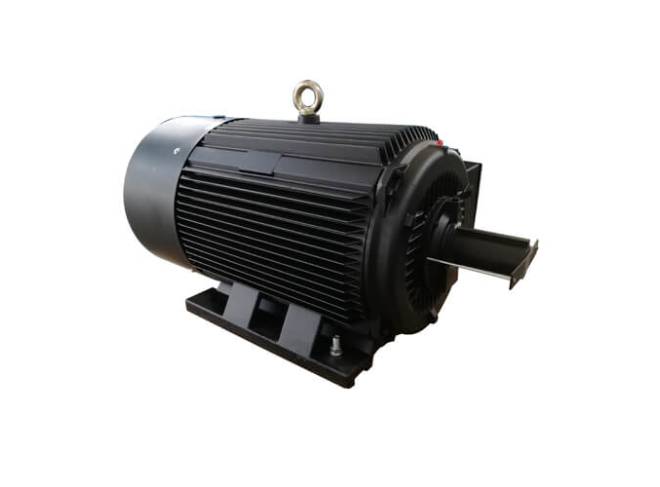Electric motors are electromechanical devices that convert electrical energy into mechanical energy. According to the type of input, we divide it into single-phase motors and Three Phase Motor.
The most common types of three-phase motors are synchronous motors and induction motors. If three-phase electrical conductors are placed in certain geometric positions, electric fields will be generated. The rotating magnetic field rotates at a certain speed, which is called synchronous speed. If there is an electromagnet in the rotating magnetic field, the electromagnet is magnetically locked by the rotating magnetic field and rotates at the same rotating field speed. This is the source of the term synchronous motor because the rotor speed of the motor is the same as the rotating magnetic field.
Generally, its structure is almost similar to that of a three-phase induction motor, the difference is that we provide direct current to the rotor here, and we will explain the reason later. Now, let us first understand the basic structure of this motor.
Synchronous Motors are not self-starting in nature. They need some external means to make their speed close to the synchronization speed, and then synchronize. Its operating speed is synchronized with the power supply frequency, so for a constant power supply frequency, they can be used as constant speed motors regardless of load conditions. The motor has the unique characteristics of being able to run under any power factor. This makes it used to improve electrical power factor.

Synchronous Motors
The synchronous motor is a double-excited motor, which means it provides two electrical inputs. Its stator windings include: we provide three-phase power for the three-phase stator windings and provide direct current for the rotor windings.
A 3-phase stator winding with 3-phase current will generate 3-phase rotating magnetic flux. A rotor with a DC power supply also generates a constant flux. Taking into account the 50 Hz power frequency, we can calculate that the three-phase rotating magnetic flux rotates 3,000 times in 1 minute and 50 times in 1 second.
At a certain moment, the rotor pole and the stator pole may have the same polarity, thereby generating a repulsive force on the rotor, and at the next moment, it will be NS, which will cause attraction. However, due to the inertia of the rotor, due to attractive or repulsive force, the rotor cannot rotate in any direction, and the rotor remains stationary. Therefore, the synchronous motor will not start automatically.
Here, we use some mechanical means to initially make the rotor rotate in the same direction as the magnetic field, so that the speed is very close to the synchronous speed. When the synchronous speed is reached, a magnetic lock will occur, and the synchronous motor will continue to rotate even after the external mechanical device is removed.
Motors started by external prime movers: A synchronous motor is mechanically coupled with another motor. It can be a Three Phase Induction Motor or a DC parallel motor. Here, we do not apply DC excitation initially. It rotates at a speed very close to its synchronous speed and then gives a DC excitation. After a period of time, when an electromagnetic lock occurs, the power supply to the external motor will be cut off.
Damper winding In this case, the synchronous motor is of salient pole type, and the additional winding is placed on the pole face of the rotor. Initially, when the rotor is not rotating, the relative speed between the damper winding and the rotating air gap magnetic flux is large, and an electromotive force is induced therein, thereby generating the required starting torque. When the speed is close to the synchronous speed, the electromotive force and torque will decrease, and finally decrease when electromagnetic lock occurs; the torque will also decrease to zero. Therefore, in this case, the synchronous motor is first operated as a three-phase induction motor with additional windings, and finally synchronized with the frequency.
A synchronous motor with no load on the shaft is used to increase the power factor. Because it has the characteristics of working under any power factor, it can be used in the case of expensive static capacitors in the power system.
Synchronous motors are suitable for occasions where the running speed is small and high power is required. For power requirements from 35 kW to 2500 kW, the size, weight and cost of the corresponding three-phase induction motors are very high. Therefore, these motors are preferably used.
Copyright © ZCL Electric Motor Technology Co., Ltd. All Rights Reserved | Sitemap | Powered by 